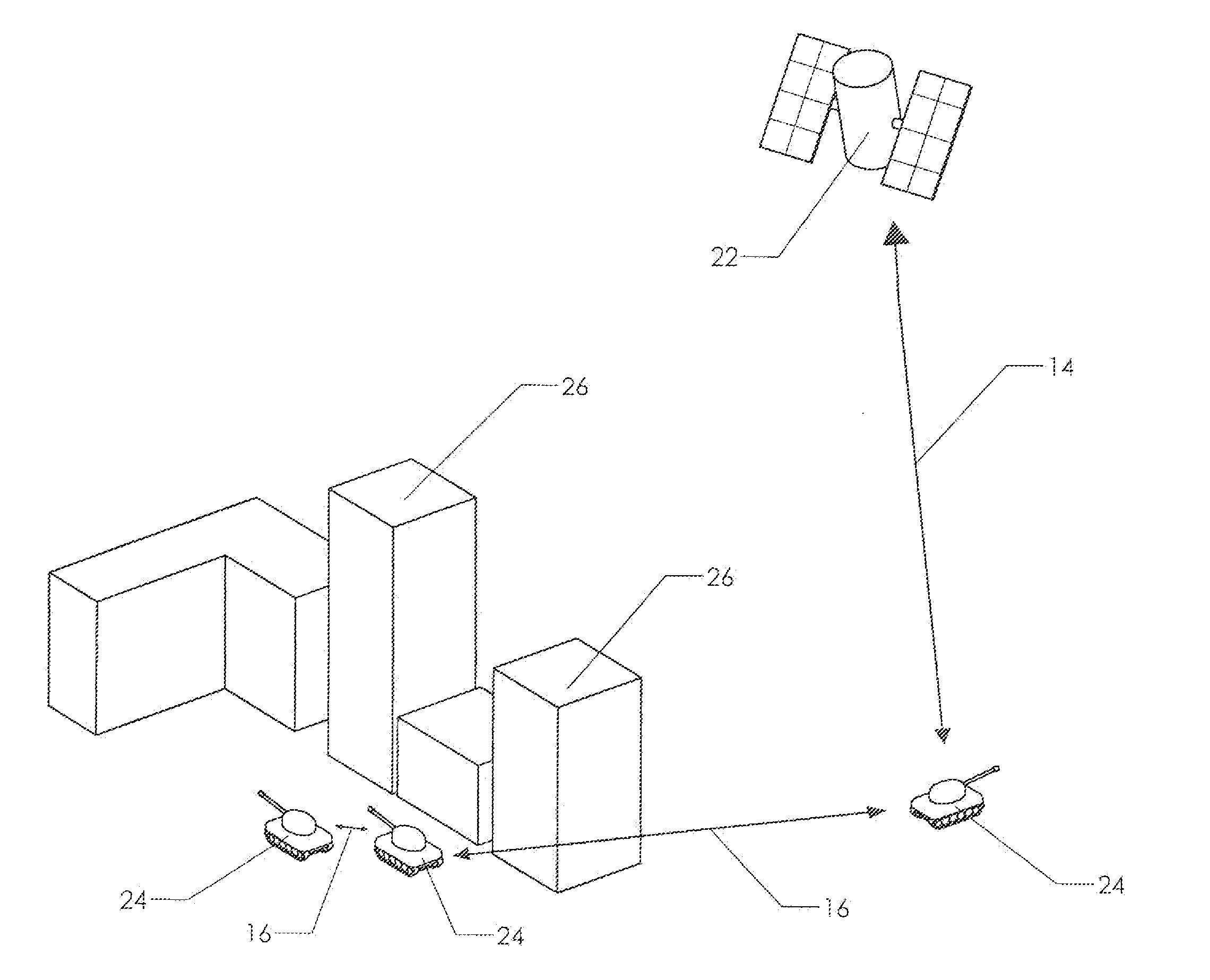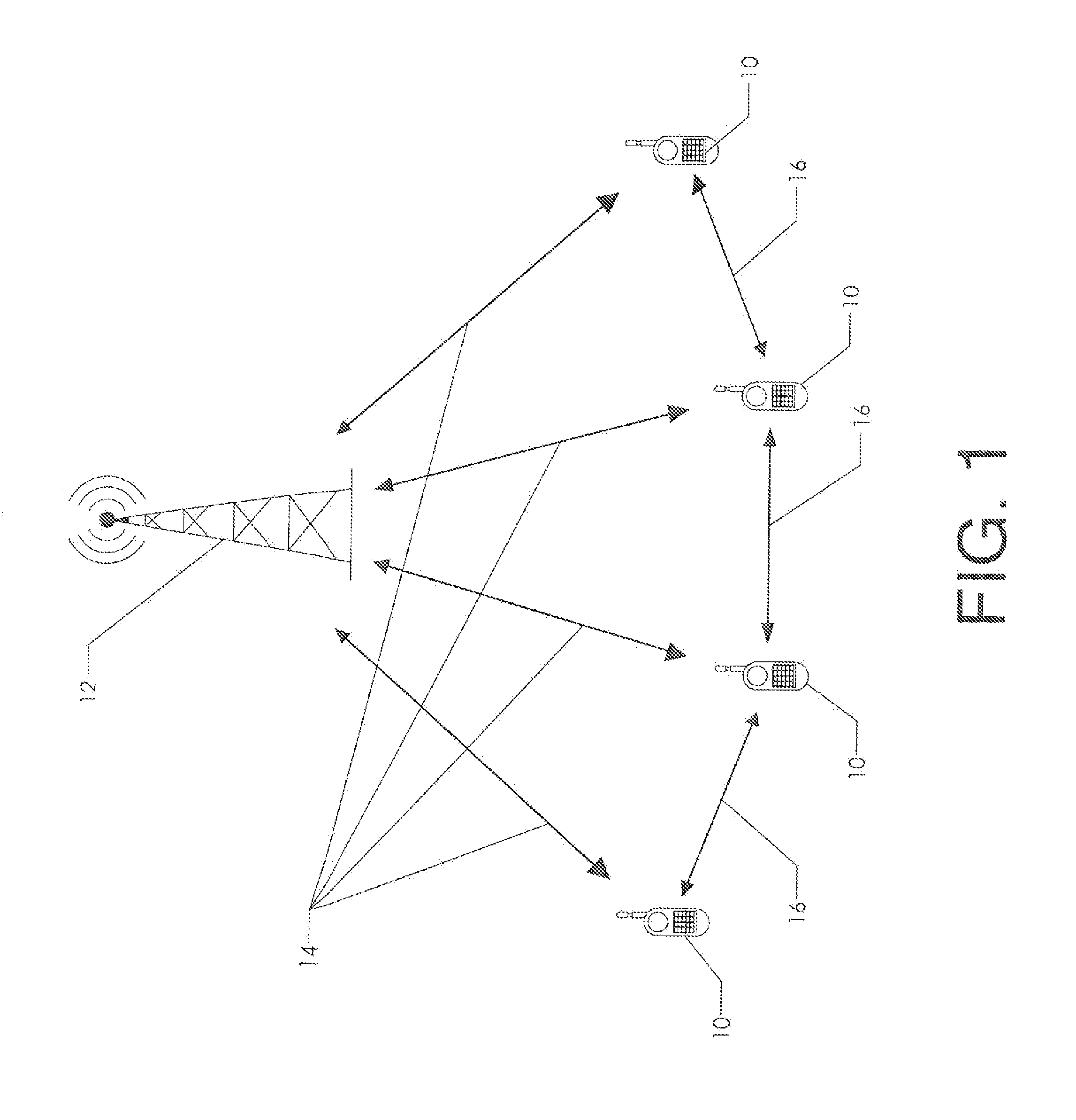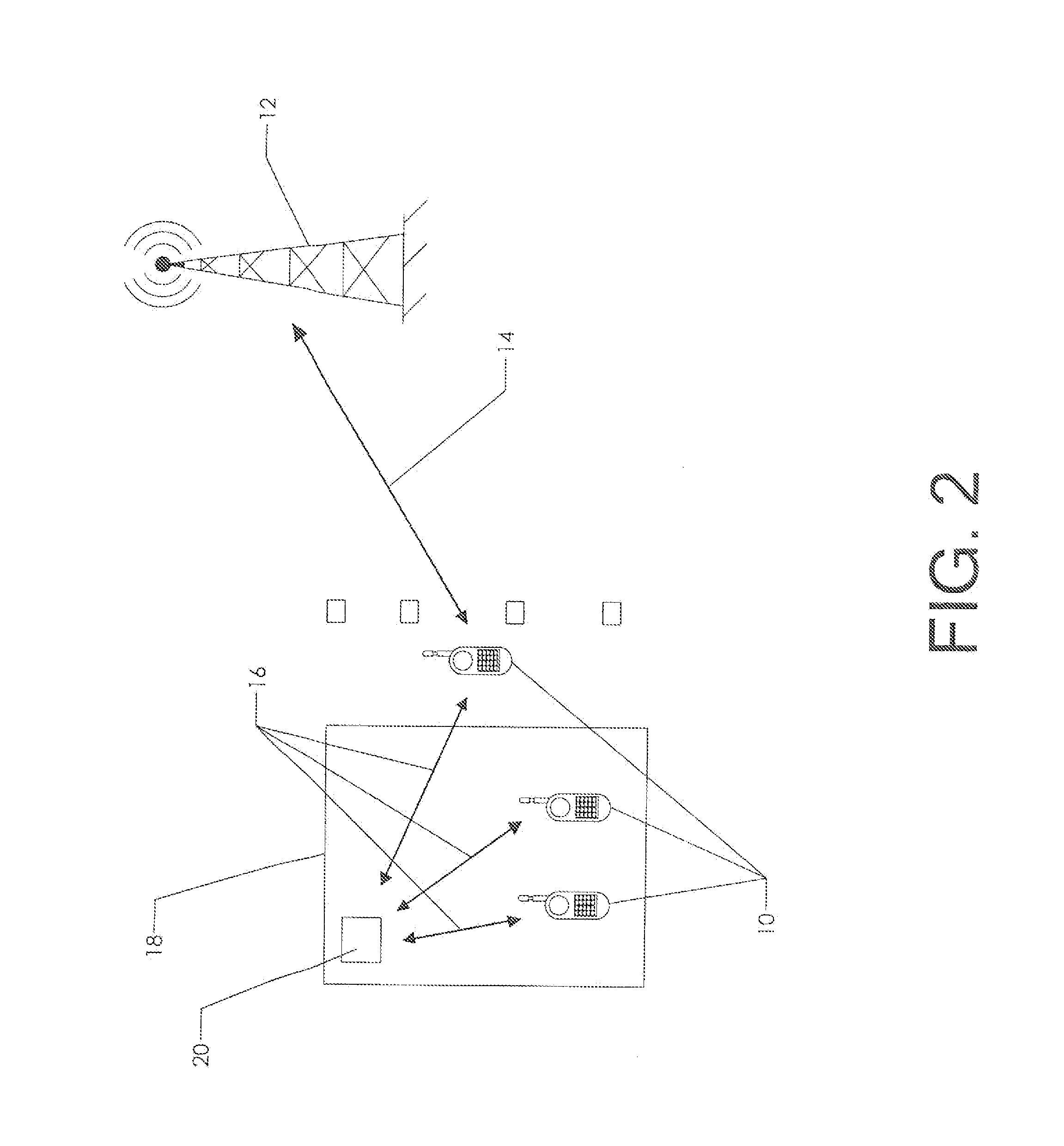Opportunistic Listening System and Method
a listening system and a technology of a listening system, applied in the field of communication, can solve the problems of long delay, limited range of wifi link, low capacity of cell link, etc., and achieve the effect of improving the ability to receive a transmitted signal
- Summary
- Abstract
- Description
- Claims
- Application Information
AI Technical Summary
Benefits of technology
Problems solved by technology
Method used
Image
Examples
Embodiment Construction
[0039]FIG. 1 schematically depicts a communication system having sender links and peer links. A plurality of cell phones 10 are in communication with a cellular network via cell tower 12. Each cell phone can communicate directly with the cell tower via a sender link 14.
[0040]Each cell phone can also communicate with the other cell phones via a peer link 16. This peer link can assume many forms. One example is the use of a wireless local area network. The four cell phones depicted might all be in the same facility and thereby in range of a WiFi network providing wireless router capability. Or, the cell phones could establish an ad-hoc WiFi network among themselves without the need for a pre-existing WiFi network. They could then communicate with each other directly, or by a more indirect method such as sending messages over the Internet.
[0041]The availability of the dual communication channels offers advantageous possibilities that are not immediately apparent from the depiction of F...
PUM
 Login to View More
Login to View More Abstract
Description
Claims
Application Information
 Login to View More
Login to View More - R&D
- Intellectual Property
- Life Sciences
- Materials
- Tech Scout
- Unparalleled Data Quality
- Higher Quality Content
- 60% Fewer Hallucinations
Browse by: Latest US Patents, China's latest patents, Technical Efficacy Thesaurus, Application Domain, Technology Topic, Popular Technical Reports.
© 2025 PatSnap. All rights reserved.Legal|Privacy policy|Modern Slavery Act Transparency Statement|Sitemap|About US| Contact US: help@patsnap.com



